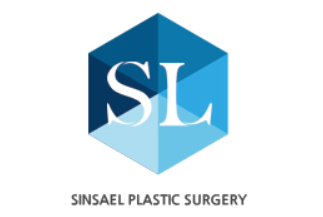Upper Eyelid Hooding in Korea
Seoul, Gangnam
SINSA L Plastic Surgery
Eye-Specialized Care & Cost Guide
At a Glance
- What it is: Heavy skin covering the lash line/crease (dermatochalasis) ± true droop (ptosis) and brow descent
- Fixes that work: Upper blepharoplasty, ptosis repair (levator/MMCR), temporal/endoscopic brow lift, sub-brow lift, internal browpexy
- Goal: Brighter, defined eyes with a natural crease—no hollowness, no “surprised” look
- Fly-in stay: Typically 7–10 days in Seoul for stitch removal & early checks
Why Korea — and Why an Eye-Specialized Clinic?
1) Eyelid-first planning
Specialized teams design the crease, lid margin, corners, and brow together. That prevents over-resection of skin and keeps the look believable.
2) High-volume finesse
Korean periorbital surgeons perform large case volumes, refining crease design, fat preservation, and ptosis/brow decisions for middle-aged eyes.
3) Structure-preserving techniques
Modern approach = move/preserve fat, correct muscle/tendon (ptosis) when needed, and lift the brow tail if that’s the true culprit.
4) Traveler-friendly systems
Clear English consults, photo reviews, printed aftercare, and itinerary-aware scheduling (stitch-out ~day 5–7).
5) Value without cutting corners
Surgeon-led care, hospital-grade protocols, meticulous scar placement—at competitive pricing.
What Actually Causes Upper Hooding?
- Dermatochalasis: Extra upper-lid skin hides the crease and smudges makeup.
- Ptosis: The lid margin sits low (you lift brows to see)—needs levator/MMCR, not just skin trimming.
- Brow descent: Low brow tail folds skin over the outer lid—best fixed with a temporal/endoscopic lift or sub-brow in selected Asian lids.
- Volume/ROOF changes: Fullness can worsen heaviness; we contour conservatively (no hollowing).
- Skin quality: Crepey skin may need staged energy/skin care.
Treatment Menu (Customized)
Upper Blepharoplasty
Precise skin (± muscle) tailoring,
stable crease fixation (parallel or in-out taper), conservative fat contouring.
Ptosis Repair (Levator/MMCR)
Lifts the
lid margin when true droop exists; often paired with upper bleph for definition and stability.
Brow Solutions
- Temporal (Lateral) Brow Lift – short scar; targets lateral hooding.
- Endoscopic Brow/Forehead Lift – multi-portal lift for global descent & frown line release.
- Sub-Brow Lift – powerful lateral de-hooding (scar camouflaged at brow line); popular for Asian lids.
- Internal Browpexy – mild tail support through the bleph incision.
Adjuncts (case-by-case)
Epicanthoplasty (inner-corner refinement), light fractional/RF later for fine lines.
Who Is a Good Candidate?
- Hidden/low crease, makeup imprinting, or “tired” outer lids
- Photos show brow tail below the rim or you strain brows to open eyes
- Realistic goals and willingness to follow aftercare
Cost Estimates (Guide)
Final fees vary by anatomy, technique, and combinations. Ranges typically include surgeon + facility + anesthesia (KRW).
- Upper Blepharoplasty: ₩1.8M–₩4.0M
- Ptosis Repair (levator/MMCR): ₩1.8M–₩4.8M
- Temporal (Lateral) Brow Lift: ₩2.0M–₩4.0M
- Endoscopic Brow/Forehead Lift: ₩3.0M–₆.0M
- Sub-Brow Lift: ₩2.0M–₄.0M
- Internal Browpexy (add-on): ₩0.8M–₁.8M
- Revision Upper Blepharoplasty: ₩3.5M–₆.5M
Example Scenarios
- A. Simple dermatochalasis, normal brow: Upper bleph → ₩1.8M–₩4.0M
- B. Hooding + true droop: Upper bleph + ptosis repair → ₩3.3M–₩6.5M
- C. Lateral hooding (low brow tail): Temporal brow lift (± upper bleph) → ₩2.0M–₩6.5M total
- D. Global brow descent + strong frown lines: Endoscopic lift (± upper bleph) → ₩3.0M–₩8.5M total
- E. Asian lid with lateral excess, wants hidden crease: Sub-brow lift ± upper bleph → ₩2.0M–₩6.5M total
Travel Timeline (Typical)
- Day 0: Outpatient surgery (45–120 min)
- Days 1–3: Peak swelling; head elevated; cool compresses
- Day 5–7: Stitch removal (if external)
- Day 7–10: Socially presentable; light makeup after clearance
- Weeks 3–6: Crease/brow settle naturally
- Months 3–6: Final shape & scar maturation
How to Get Your Personal Estimate (Fast)
Send (email or upload):
- Photos: front/45°/side with brows relaxed, then lightly lifted with fingers (to show desired change)
- Prior eyelid/brow procedures or Botox/filler (what/when)
- Top priorities: hooding, droop, asymmetry, outer-lid heaviness
- Travel window & downtime preference
- Any dry eye, contact lenses, blood thinners, or allergies
You’ll receive a custom plan (bleph vs ptosis vs brow—or a combo), a fee range, and a 7–10 day recovery calendar tailored to your trip.
FAQs
Do I need ptosis repair or just skin removal?
If the
lid margin is low, you need
ptosis repair; skin-only surgery won’t fix droop.
Brow lift or upper bleph first?
If the
brow tail is low, lift the brow first (often
temporal) and then do a
conservative bleph if needed.
Will I look “surprised”?
No—lift vectors and crease height are
conservative and matched to your anatomy.
Where are the scars?
Upper bleph hides in the crease; temporal/endoscopic brow incisions are in the hair;
sub-brow sits at the brow line and is planned for camouflage.
How long will it last?
Typically
years. Aging continues, but structural problems (droop, descent, excess skin) are corrected.

